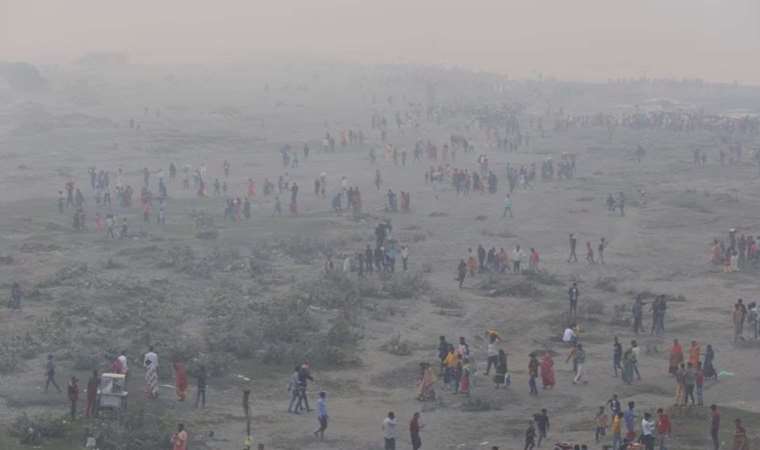Air pollution poses significant threat to life expectancy in South Asia
A new report, published on Tuesday, underscores the pressing concern of rising air pollution, revealing that it could lead to a reduction of over five years in life expectancy per person across South Asia – a region notably burdened by hazardous air quality.

The University of Chicago's Energy Policy Institute (EPIC) presented its latest Air Quality Life Index, revealing that South Asia, encompassing countries such as Bangladesh, India, Nepal, and Pakistan, is accountable for over 50% of the total global loss of life years due to pollution.
Industrial expansion and population growth have contributed to a significant deterioration in air quality across South Asia. Particulate pollution levels have surged over 50% since the beginning of the century, overshadowing even larger health threats.
According to the study, Bangladesh, recognized as the world's most polluted country, faces an average loss of 6.8 years per person, compared to 3.6 months in the United States. The research employs satellite data to calculate the effects of heightened airborne fine particles on life expectancy.
The report emphasizes that India has driven around 59% of the global escalation in pollution since 2013. Hazardous air quality further threatens lives in some of the nation's most polluted regions. The densely populated city of New Delhi, known as the world's most polluted mega-city, has witnessed an average lifespan reduction of over 10 years.
The report advocates that aligning global levels of lung-damaging airborne particles, designated as PM 2.5, with the World Health Organization's (WHO) recommendations, could potentially raise average life expectancy by 2.3 years, which equates to a collective 17.8 billion life years.
If the WHO guidelines are met, an average Pakistani resident could gain 3.9 additional years of life, while an individual in Nepal could see an extended lifespan of 4.6 years, as outlined in the report.
China has effectively reduced pollution by 42.3% between 2013 and 2021, highlighting the importance of governments providing accessible air quality data. Such data availability is instrumental in narrowing global disparities in access to pollution-fighting tools.
Most Read News
-
 Japan's parliament to elect new prime minister on Tuesda
Japan's parliament to elect new prime minister on Tuesda
-
 Venezuela's Maduro accuses US of seeking regime change
Venezuela's Maduro accuses US of seeking regime change
-
 Over 170 US citizens reportedly detained by immigration
Over 170 US citizens reportedly detained by immigration
-
 Cuba vows support for Venezuela after Trump authorizes c
Cuba vows support for Venezuela after Trump authorizes c
-
 China says it will ‘optimize’ rare earth export controls
China says it will ‘optimize’ rare earth export controls
-
 Madagascar coup leader signals openness to dialogue with
Madagascar coup leader signals openness to dialogue with
-
 Russians, Ukrainians ‘not yet ready to make a deal’ on e
Russians, Ukrainians ‘not yet ready to make a deal’ on e
-
 Magnitude 6.0 earthquake jolts southern Philippines
Magnitude 6.0 earthquake jolts southern Philippines
-
 Hamas says returning all Israeli captives’ bodies will t
Hamas says returning all Israeli captives’ bodies will t
-
 Trump says he plans to meet with Putin in Hungary within
Trump says he plans to meet with Putin in Hungary within










